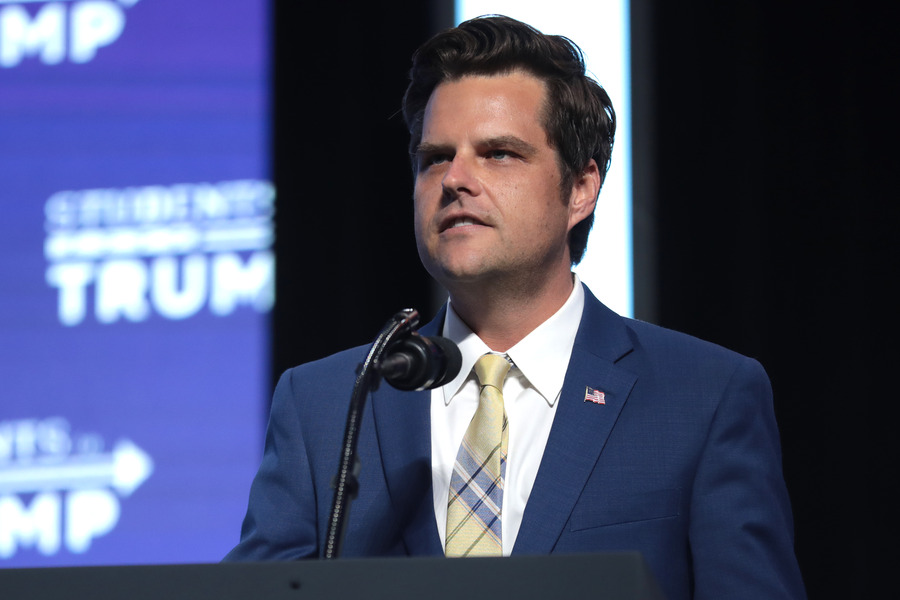Travel Ban Update: Supreme Court Grants Certiorari
The Supreme Court has just granted certiorari in Hawaii’s challenge to the September 2017 iteration of President Trump’s travel ban (EO-3).
Published by The Lawfare Institute
in Cooperation With

The Supreme Court has just granted certiorari in Hawaii’s challenge to the September 2017 iteration of President Trump’s travel ban (EO-3). The court’s order grants the government’s petition to review the decision of the Ninth Circuit (which I discussed on Lawfare) holding that EO-3 exceeds the president’s power under the Immigration and Nationality Act (INA). The court specifies four issues that it wishes the parties to brief: 1) whether the challenge to EO-3 is justiciable; 2) whether EO-3 is a lawful exercise of executive authority; 3) whether the global injunction against EO-3 entered by the Hawaii District Court and affirmed in pertinent part by the Ninth Circuit is overbroad; and 4) whether EO-3 violates the Establishment Clause.
The court’s request for briefing on the Establishment Clause issue highlights a possible difference between the Ninth Circuit’s decision and a pending decision by the Fourth Circuit, which has yet to rule on a parallel challenge to EO-3 . Because the Ninth Circuit found that EO-3 exceeded power delegated to the president under the INA, it did not reach the constitutional issue. The Fourth Circuit may opine on the latter question when it issues its decision. In any case, because the Supreme Court might reach a different result than the Ninth Circuit on the statutory question, it had to also direct the parties to brief the constitutional point.
There will be more to say about the merits of the case as we count down toward a probable April argument at the court. In anticipation of those discussions, I’ll merely identify stark differences between the parties on questions (1) and (2). The Ninth Circuit rejected the government’s claim that EO-3 was covered by the doctrine of consular nonreviewability, noting that the Supreme Court had proceeded to the merits in the 1993 case Haitian Centers Council v. Sale in which the court held that the president could order the interdiction of inadmissible foreign nationals navigating the high seas in unsafe vessels. Finding that EO-3 was similarly reviewable, the Ninth Circuit warned that under the government’s position, the executive branch, “at any time and under any circumstances, could bar entry of all aliens from any country” without judicial review. According to the Ninth Circuit, rejecting that position was necessary to signal that the government could not “run[] roughshod over the principle of separation of powers.”
Regarding question (2)–whether EO-3 is a lawful exercise of executive authority–the government also has taken a sweeping view of the president’s delegated authority under the INA. The government relies on an unbounded reading of 8 U.S.C. § 1182(f) (the “entry” provision), which allows the president to bar entry of foreign nationals when such entry is “detrimental to the interests of the United States.” According to the government’s position at the Ninth Circuit oral argument , § 1182(f) gives the president a blank check, with the gossamer-thin condition that the president cannot unilaterally bar all entry of foreign nationals into the United States upon a conclusory statement such as, “I don’t like immigration.”
For the Ninth Circuit, the government’s vision of unlimited executive power collided with the provision’s more modest origins in barring the entry of wartime spies and saboteurs and with another provision of the INA, 8 U.S.C. § 1152(a)(1)(A) (the nondiscrimination provision), that bars discrimination based on national origin in the issuance of immigrant visas. The Ninth Circuit noted (along with the immigration scholars’ amicus brief that WilmerHale’s Alan Schoenfeld and I filed) that the nondiscrimination provision sought to cabin executive discretion. Limits on executive discretion prioritized the family reunification value that Congress declared to be “foremost” in its 1965 overhauling of the INA, in which Congress also abolished invidious national origin quotas that for decades had limited immigration to the U.S. from Asia and elsewhere.
According to the Ninth Circuit, the INA’s prioritization of family reunification and its abolition of quotas required a more tailored reading of the entry provision. Otherwise, the executive branch could install a de facto system of national origin quotas and frustrate family reunification. Taking a “common sense” view of Congress’s intent, the Ninth Circuit asserted that Congress could not have wished to grant the president such untrammeled authority. That more tailored view would encompass the interdiction of inadmissible noncitizens that the Supreme Court upheld in Sale. It would also authorize other notable examples from past practice, including President Reagan’s efforts to persuade Cuba to repatriate its inadmissible foreign nationals and President Carter’s measures to resolve the Iranian hostage crisis.
Assuming that the Supreme Court finds that the challenge to EO-3 is justiciable, the reaction of the Justices to question (2) will be central (especially if fewer than five Justices are inclined to find that EO-3 violates the Establishment Clause). The court’s stay of the injunctions below introduces an element of uncertainty here. Only Justices Ginsburg and Sotomayor noted that they would have denied the government’s stay request. If the Justices’ positions on the stay herald their positions on the merits of Hawaii’s challenge to EO-3, Hawaii may be facing an uphill battle. However, in a complex case such as this one, it is risky to extrapolate from a one-page order bereft of discussion of the merits. That’s all the more reason to eagerly anticipate the briefing and argument in this important case.


-(1).jpeg?sfvrsn=143eb65_5)
.jpg?sfvrsn=d5e57b75_5)

